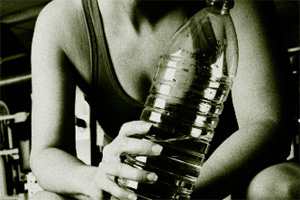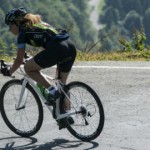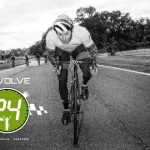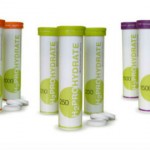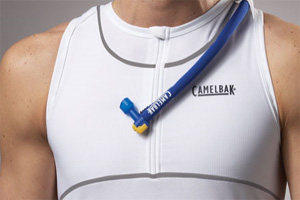 Most cyclists don’t have big elephant ears to flap around or long slobbery tongues like a dog – or Gene Simmons – which is why, as humans, we primarily use sweat as a means of heat control. We’re oversimplifying a little here; technically we control heat through the complex relationship between our central nervous system and various interconnected parts of our brain, primarily the anterior hypothalamus. But when it comes to cooling us down, sweat’s the thing and that’s why as cyclists we should spend a little time trying to understand, perhaps even love, the 2.6 million sweat glands that cover our skin.
Most cyclists don’t have big elephant ears to flap around or long slobbery tongues like a dog – or Gene Simmons – which is why, as humans, we primarily use sweat as a means of heat control. We’re oversimplifying a little here; technically we control heat through the complex relationship between our central nervous system and various interconnected parts of our brain, primarily the anterior hypothalamus. But when it comes to cooling us down, sweat’s the thing and that’s why as cyclists we should spend a little time trying to understand, perhaps even love, the 2.6 million sweat glands that cover our skin.
Sweating cools us because of some pretty basic physics: it takes a certain amount of heat/energy to vaporise the liquid (sweat) on your skin. Whisking away 500ml of sweat (a not unreasonable hourly rate on your bike) removes in excess if 250,000 calories of heat from the body. When the sweat glands are stimulated on a long hot ride they produce a fluid with high concentrates of body ‘salts’ (including sodium, chloride, potassium, magnesium) As this fluid moves up through the duct that leads to the pores on your skin a percentage of the ‘salts’ are reabsorbed into the body, helping to maintain a healthy level. With regular exposure to hot conditions or strenuous rides your body becomes better adapted at reabsorbing these ‘salts’, meaning, in effect, that you can train yourself to sweat more effectively. Pretty cool, so to speak.
With this in mind here are Cyclo’s Top Tips for Cyclists
Keep it handy – A bottle of water close at hand is far more likely to be used and with greater frequency than a bottle stashed in a backpack/pannier/cupboard back at your house. Simple.
Save money – For all the “science” talked about around sports drinks, water is what your body requires and water (fresh, free tap water if you like) is what you can adequately nourish it with. Splash out on sports drinks if you so wish, it’s your money…
Replace the ‘salts’ – Replacing the ‘salts’ that you shed couldn’t be easier. Invest in some nuun tablets, Elete Water or similar product and your body will thank you. However (more money saving here) a ride of an hour or two is unlikely to be significantly improved by using products like this, so save them for the really long chugging challenges.
Start as you mean to go on – Begin your ride well hydrated, but avoid coffee which, although there is some evidence to suggest it improves both VO2Max and lactic acid threshold, is a diuretic likely to add to dehydration. Same goes for alcohol. Sorry.
Wear the right kit – A well ventilated helmet will keep you cooler and good “wicking” clothing will whisk away the sweat. Neither of these necessarily reduces the amount of sweating but it all fits together for a sensible “hydration strategy.”
Drink now, not later – Because modern apparel is so effective at keeping cyclists feeling cool (and because we are dashing onwards at a rate of knots being cooled by the air) cyclists are at some risk of not noticing how much they are sweating – so drink before you feel thirsty.
Don’t over-hydrate – In extreme conditions taking on too much water can be just as damaging (arguably considerably more so) than not drinking enough. Unless you are carefully monitoring your bodies ‘salt’ loses, or ensuring that you replace them – nuun, Elete, etc. – drinking excessive water can lead to all manner of complications; Google “Water intoxication” for all the gory details… It’s possible to calculate your personal “sweat rate”, but as this invariably involves lots of weighing yourself naked, you can largely rely on the ready-reckoner of between 500 and 700ml per hour, so aim to drink around this amount too.
Image (c) camelbak – www.camelbak.com
